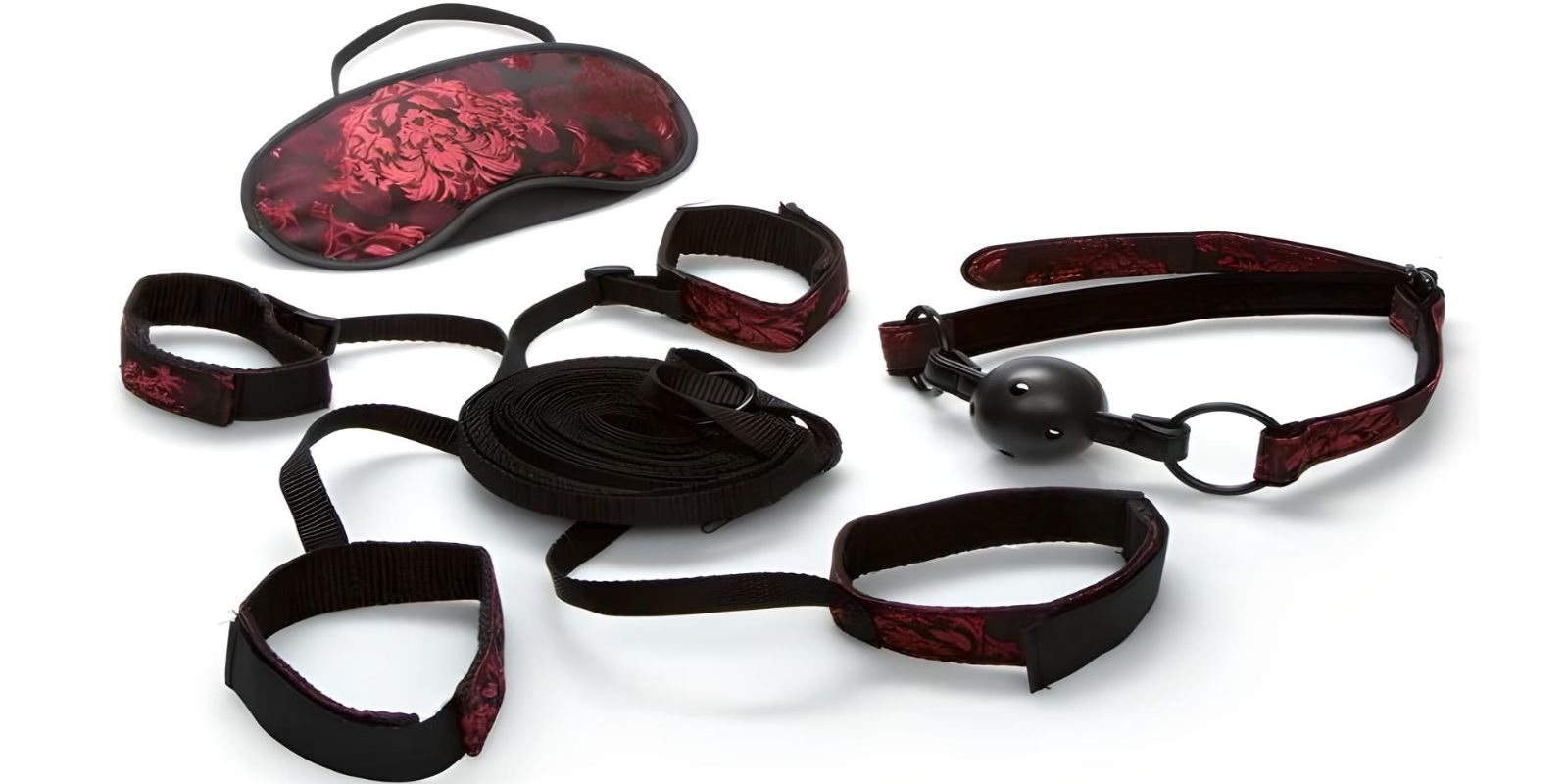Kink and Bondage: Understanding the Power of Trust, Control, and Consent
Kink and Bondage is about trust, consent, and clear control. With honest talk, safe words, and aftercare, partners can explore power in ways that feel safe, connected, and real.
Kink and bondage are often misunderstood. For many, the words bring confusion, fear, or even judgment. These reactions usually come from a lack of clear information. What we don’t understand, we tend to push away or label as wrong. But behind the curtain of leather, rope, and roleplay lies something much deeper. These practices are rooted in trust, honesty, and emotional safety. They are not about pain or domination for its own sake. They are about connection, surrender, and control given freely. This guide helps explain kink and bondage in a way that’s clear, respectful, and grounded in real human experience.
- What Is Kink and Bondage or BDSM?
- Kink and Bondage Play: The Power of Control
- Why Consent Is Everything in Kink and Bondage
- Kink and Bondage Isn’t Always About Sex
- Building Trust Through Kink and Bondage
- Common Questions About Kink and Bondage
What Is Kink and Bondage or BDSM?
The phrase kink and bondage often stirs up confusion. People imagine dark rooms, painful acts, or even emotional harm. These reactions come from myths, not facts. BDSM stands for bondage, discipline, dominance, submission, sadism, and masochism. It includes many kinds of play and power exchange between partners. At its core, BDSM is about trust. It creates a space where people can explore desires safely and openly. Partners agree on roles, limits, and activities. Every action is based on consent. There is no room for force or pressure. It is a shared experience built on honesty and control.
Not everyone who enjoys kink identifies as part of the BDSM community. Kink can mean any act that feels taboo or outside of “vanilla” sex. Bondage, on the other hand, usually involves restraining movement. This might mean rope, cuffs, or other tools. Some people enjoy giving up control, while others enjoy taking the lead. These roles are fluid. You do not have to follow a fixed identity. The experience is what matters most. Everyone defines their own version of pleasure. That’s the beauty of this world. It allows people to shape intimacy on their own terms, with care and intention.
Kink and Bondage Play: The Power of Control
Power exchange is one of the most misunderstood parts of kink and bondage. Many assume it’s about punishment or pain. In truth, it’s about surrender. A partner willingly hands over control to someone they deeply trust. This is not a loss of power—it’s a gift. The dominant partner takes responsibility for their actions. The submissive partner chooses to let go, but only within set limits. These roles are clearly agreed upon before any scene begins. What might look aggressive from the outside is often grounded in safety, love, and care. That dynamic can create intimacy stronger than words.
Control in BDSM is structured. There are safe words, check-ins, and detailed conversations. Every step is planned and respected. The dominant does not act without consent. The submissive is not weak—they are empowered through choice. Some people feel most free when they give up control. Others feel most connected when they take it. This balance is where the beauty of kink lives. No two dynamics are the same. What matters is that both people feel safe, heard, and satisfied. Kink and bondage become a powerful language of connection when built on mutual respect and emotional safety.
Why People Choose the Scandal Bed Restraint Kit
The Scandal Bed Restraint Kit is a trusted choice for couples exploring control and surrender. It allows for secure restraint under any mattress without complicated setup. The straps are soft yet durable, providing comfort and stability. Many find it helps them ease into bondage without feeling overwhelmed. It supports a range of positions while keeping safety a top priority. This kind of tool enhances trust between partners. It invites communication, laughter, and connection. For those new to kink, it offers a non-threatening way to try restraint. For experienced users, it delivers consistency and reliability during intense scenes.

Why Consent Is Everything in Kink and Bondage
Consent is the foundation of kink and bondage. Without it, nothing is safe, ethical, or meaningful. Everyone involved must agree to what will happen, when it will happen, and how. These agreements are made with full understanding and without pressure. Consent is not a one-time thing—it’s ongoing. It can be given, changed, or withdrawn at any moment. Saying no is always allowed. Saying stop must always be respected. The more open and honest the communication, the better the experience. Without consent, there is no trust. Without trust, there is no real intimacy.
People often fear that giving up control means losing safety. In reality, control is only handed over under strict conditions. There are agreed signals, safe words, and aftercare plans. These tools create a safe space where boundaries are respected and honored. Both partners take responsibility for protecting those boundaries. This kind of clarity is rare in many traditional relationships. That’s why many who practice kink say it leads to stronger bonds and emotional closeness. Kink and bondage offer a space where people can express their needs openly and be fully seen. It’s not about risk. It’s about respect.
BDSM Isn’t Always About Sex
Many people assume kink and bondage are always tied to sex. That’s not always true. These practices often go deeper than physical arousal. For some, it’s about emotional release or mental clarity. It can feel like meditation, where the mind lets go of control and simply exists in the moment. The body responds to the experience through adrenaline, endorphins, and calm. These physical responses bring peace and euphoria. The scene may not end with orgasm. Instead, it might end with a hug, quiet reflection, or just the joy of shared connection. That intimacy can be just as powerful.
Some sessions involve restraint, power exchange, or roleplay without any nudity or penetration. That doesn’t make them less valid. Every person defines what their play looks like. It can include pain, pleasure, silence, or laughter. What matters is the connection between the people involved. This is why many find kink healing. It creates space to feel, process, and release. Kink and bondage give people permission to break free from everyday roles and expectations. In doing so, they find authenticity. It’s not about what you do. It’s about how safe, present, and accepted you feel in that moment.
Building Trust Through Kink and Bondage
At the heart of kink and bondage is a deep level of trust. Two people come together, not just to play, but to connect. They create a space where boundaries are honored and desires are respected. Every rope tied, word whispered, or control given holds meaning. These acts are not reckless. They are thoughtful, careful, and intentional. People often feel more seen in these moments than in everyday life. That’s because true vulnerability exists when both partners feel completely safe.
Kink is not about control for control’s sake. It’s about choosing who to let in and how far to go. This kind of relationship, built on consent and honesty, can feel more secure than many traditional ones. There’s constant communication, check-ins, and emotional care. That creates closeness. It builds resilience. Kink and bondage give people the tools to express themselves honestly and without shame. When practiced with care, it becomes an act of mutual respect and emotional intimacy. For many, that’s where real trust begins to grow.

Common Questions About Fetishes and Bondage
What does kink and bondage mean in a relationship?
Kink and bondage involve consensual power exchange, physical restraint, or roleplay between partners. It’s not about domination without limits. It’s about creating emotional and physical safety where both people agree on what’s happening. This builds communication and trust. Many couples find that it helps them grow closer and understand each other better. It requires openness and honesty before, during, and after scenes. For some, it’s a lifestyle. For others, it’s something they enjoy occasionally. Either way, it allows people to connect in a deeply personal way. It’s about control given with care, and intimacy shaped by consent and intention.
Is kink and bondage always sexual?
No, kink and bondage are not always about sex. While they can be erotic, they don’t have to involve intercourse or orgasm. For many, it’s more about the emotional and psychological experience. Some scenes focus on power dynamics, restraint, or sensation. Others are about roleplay or trust-building. These acts may never lead to sexual activity. That doesn’t make them less intimate. They often bring people closer through vulnerability and shared understanding. The point is not what happens physically, but how both people feel. This makes kink flexible and meaningful, even for those who don’t tie it to sexual expression.
How do you talk to a partner about trying kink and bondage?
Start by choosing a time when both of you feel calm and safe. Use honest, non-judgmental language. Share what you’re curious about and why. Listen carefully to your partner’s feelings and boundaries. Keep the conversation ongoing—not everything has to happen at once. It’s important to build trust before you try anything. You might research together or set up rules in advance. If your partner isn’t ready, don’t pressure them. Instead, focus on open communication. Respect builds interest over time. Talking about kink and bondage should feel like building a bridge, not forcing a leap. Patience and kindness go a long way.
Can kink and bondage be emotionally healthy?
Yes, when practiced with care, kink and bondage can strengthen emotional health. These experiences require trust, communication, and vulnerability. That often brings couples closer. For many, it offers a way to process emotions or feel grounded. Consent-based play can also boost self-awareness and confidence. It’s not about pain or punishment—it’s about connection. Partners check in with each other, respect limits, and provide aftercare. This level of attention is rare in many relationships. Because of that, people in kink communities often report deeper emotional bonds. When it’s mutual and consensual, kink supports healthy connection and emotional resilience between partners.
What are common safety tips for kink and bondage play?
Start with clear, honest communication before any scene begins. Always agree on safe words or signals. Use tools made for bondage—not improvised items. Avoid anything that restricts breathing or cuts circulation. Keep scissors nearby in case restraints need to be removed quickly. Aftercare is just as important as the scene itself. That can mean physical comfort, emotional support, or quiet time together. Check in afterward to talk about what worked and what didn’t. Never play under the influence of drugs or alcohol. Most importantly, listen. Safe kink and bondage rely on respect, preparation, and caring for each other’s limits.



